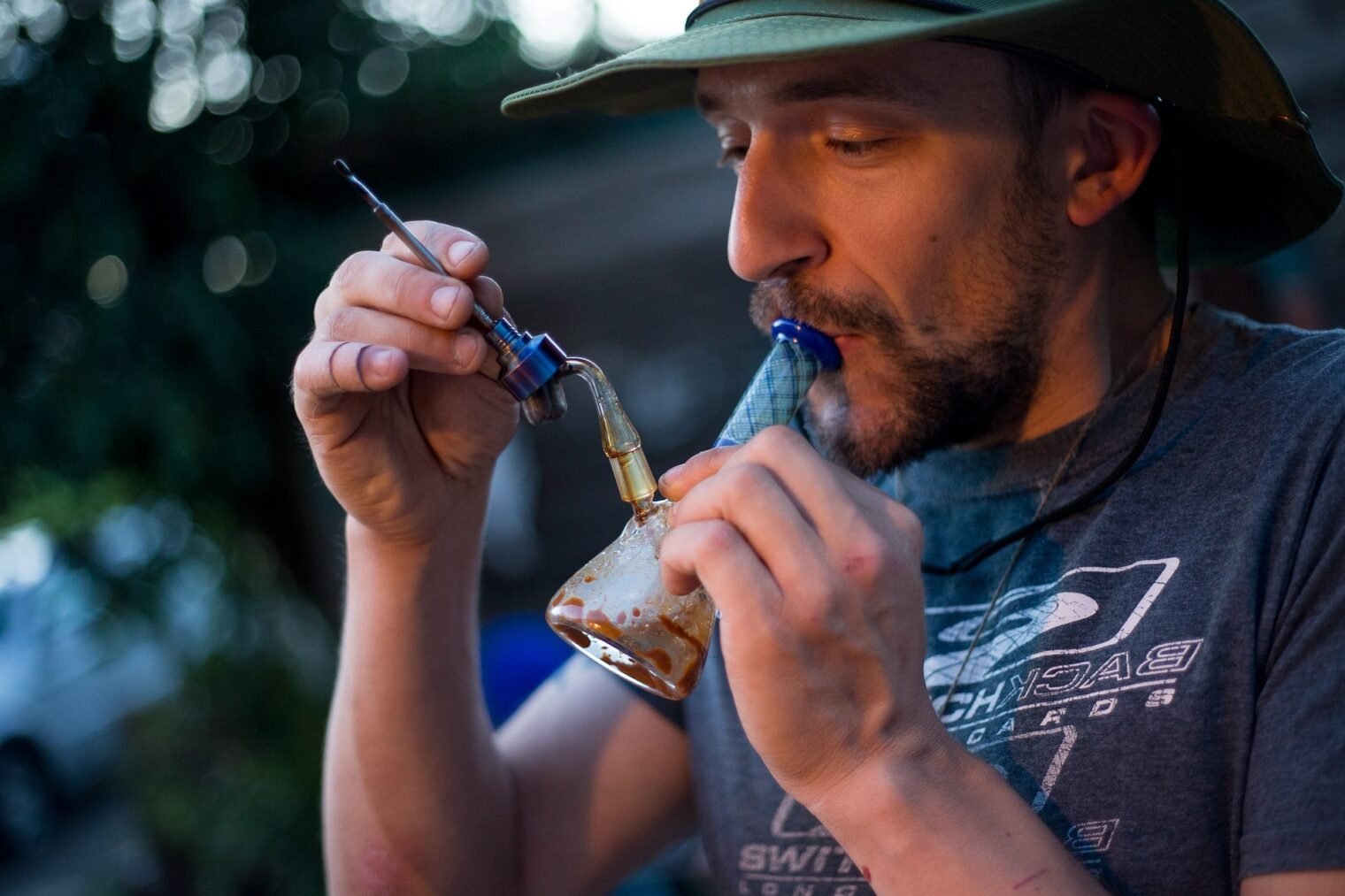The Future of Cannabis Consumption: Trends and Innovations in Products and Delivery Methods

Table of Contents
The future of cannabis consumption is a topic on every stoner’s lips, literally and metaphorically! Choosing the right way to enjoy cannabis can be tough for many. Did you know that more young adults are using cannabis today than ever before? This blog will guide you through the latest trends and innovations in cannabis consumption, from edibles to new delivery methods.
Keep reading to discover what’s next in the world of cannabis.
Current Trends in Cannabis Consumption
Young adults are increasingly using cannabis, and it’s becoming more common globally. People consume cannabis through smoking, edibles, and other methods.
Increase in usage among young adults
Recent studies reveal a noticeable rise in cannabis consumption among young adults. This age group, often college students or early career professionals, increasingly turns to marijuana for recreational use and relaxation.
The trend reflects broader societal shifts towards accepting cannabis as part of everyday life, largely influenced by ongoing legalization efforts and changes in public perception.
Social media and the internet play significant roles in shaping young adults’ views on cannabis. Platforms filled with content related to marijuana industry trends make it more accessible and remove previous stigmas associated with its use.
As a result, THC consumption becomes not just accepted but also celebrated among this demographic, driving demand for innovative products and delivery methods within the cannabis market trends.
This shift promises to impact the future landscape of the cannabis industry significantly.
Common methods of consumption (smoking, edibles, etc.)
Amidst the increases in usage among young adults, various methods of cannabis consumption have gained popularity. Smoking remains a prevalent method, with traditional joints and water pipes being widely used.
Edibles, such as gummies and baked goods infused with THC or CBD, are also becoming more favored due to their discreet nature and precise dosing options. Vaping devices have surged in popularity for their convenience and reduced health risks compared to smoking.
Additionally, tinctures, oils, and topical products offer alternative ways to consume cannabis without inhaling smoke or vapor.
Global consumption statistics
As cannabis consumption continues to evolve, it’s essential to examine the global statistics that shed light on this growing trend. The demand for cannabis products is on the rise, with an estimated 192 million people worldwide consuming marijuana annually.
In addition, countries such as Canada and Uruguay have legalized adult-use cannabis, leading to increased consumption rates and market growth. Furthermore, the increasing acceptance of medical marijuana has also contributed to these consumption statistics.
Cannabis industry predictions indicate a significant increase in global consumption as more regions legalize both recreational and medicinal use. This surge in demand has also led to a growing market for cannabis-related products and innovations across various delivery methods.
Health Risks Associated with Cannabis Consumption
Cannabis consumption can lead to lung and cardiovascular damage due to the inhalation of smoke and toxins. It also poses risky effects on driving, affecting motor skills and reaction times.
Lung and cardiovascular damage
Cannabis consumption can lead to lung and cardiovascular damage due to the inhalation of smoke, which contains harmful chemicals. These chemicals can cause irritation, inflammation, and potential harm to the lungs and heart over time.
Shortness of breath, chronic bronchitis, and an increased risk of heart disease are among the potential health concerns associated with cannabis smoking.
Moving forward in this discussion on health risks associated with cannabis consumption, it’s important to explore innovations in cannabis products and delivery methods that aim to minimize these negative effects.
Risky effects on driving
Driving under the influence of cannabis can impair coordination and decision-making abilities. Cannabis use slows reaction times and impairs judgment, increasing the risk of accidents on the road.
Studies have shown that driving after consuming cannabis can result in decreased concentration, decreased ability to maintain a steady speed, impaired lane positioning, and increased reaction time to sudden events – all factors that contribute to an increased risk of collisions.
The presence of THC in the bloodstream is associated with an increased likelihood of being involved in a motor vehicle accident. Research has indicated that individuals who consume cannabis are at a higher risk of being at fault for crashes compared to those who do not use it.
Potential for addiction and dependency
The potential for addiction and dependency exists with cannabis consumption, especially among individuals who frequently use high-THC products. It can lead to physical and psychological dependence, impacting daily functioning and overall well-being.
Recognizing the signs of dependency and seeking appropriate support are crucial in addressing this concern within the cannabis industry as it continues to expand.
Despite ongoing debates around its addictive properties, it’s essential for users and professionals entering the marijuana industry to stay informed about potential risks associated with excessive cannabis consumption.

Innovations in Cannabis Products and Delivery Methods
Cannabis products and delivery methods are evolving rapidly, with the rise of edibles, alternative consumption methods such as vaping and oils, and creative packaging and branding.
Learn more about the exciting developments shaping the future of cannabis consumption!
Rise of edible products
Edible cannabis products are gaining popularity, driven by the demand for discreet and convenient consumption methods. Infused with THC or CBD, these products include a variety of options such as gummies, chocolates, and beverages.
The appeal of edibles extends beyond traditional smoking methods and has prompted innovation in flavors, dosing precision, and product formulations to cater to diverse consumer preferences.
As legalization efforts continue to expand globally, the market for edible cannabis products is expected to grow significantly. This trend reflects evolving consumer attitudes towards cannabis consumption and presents new opportunities for product diversification within the industry.
Development of alternative consumption methods (vaping, oils, etc.)
Innovations in cannabis consumption have led to the development of alternative methods such as vaping and oils. These methods offer a smoke-free experience and provide more discreet options for consumers.
Vaping devices allow users to inhale vaporized cannabis extracts, while oils can be ingested directly or added to food and beverages for convenient consumption. Both alternatives are gaining popularity due to their convenience and potential health benefits.
Creative packaging and branding have also contributed to the appeal of these alternative consumption methods, offering sleek and user-friendly designs that resonate with modern consumers.
Creative packaging and branding
Cannabis companies are investing in creative packaging and branding to stand out in the market. Eye-catching designs, unique product names, and sustainable packaging options are becoming increasingly popular.
Brands are using vibrant colors and bold typography to appeal to a younger demographic, while also ensuring that their packaging complies with regulatory requirements.
Innovative branding strategies such as celebrity endorsements and partnerships with artists or influencers are enhancing brand recognition. These efforts aim to differentiate brands in an increasingly competitive market while adhering to strict regulations on marketing cannabis products.
Impact of legalization on product diversity
Legalization has led to a surge in diverse cannabis products, including edibles, oils, and topicals. The wide range of options caters to various consumer preferences, contributing to the expansion of the market.
Innovative packaging and branding strategies have also flourished as companies strive to stand out in this competitive landscape.
Moreover, legalization has paved the way for more research and development, resulting in enhanced product quality and effectiveness. This has not only increased consumer satisfaction but has also boosted confidence in the industry.
The Future of Cannabis Consumption
The future of cannabis consumption is evolving with advancements in products and delivery methods. Predictions for trends, innovations, and their potential impact on public health and safety are shaping the cannabis industry.
Predictions for future trends and innovations
Cannabis markets are expected to see a surge in the popularity of CBD-infused products, as consumers increasingly seek out non-intoxicating options. Innovations in cannabis technology will lead to more efficient and precise delivery methods for cannabinoids, offering users customizable experiences.
We anticipate that there will be a focus on sustainable and eco-friendly packaging solutions, reflecting the growing concern for environmental impact within the industry. Moreover, as more states legalize cannabis, we can expect an increase in diverse product offerings and new consumption methods tailored to different demographics.
The future of cannabis consumption is likely to witness advancements in precision dosing technologies and portable vaporizers, providing users with greater control over their experience.
Potential impact on public health and safety
Transitioning from predictions for future trends and innovations to potential impact on public health and safety, the evolving landscape of cannabis consumption is poised to have significant ramifications.
As new products and delivery methods emerge, their influence on public well-being cannot be overlooked. The introduction of innovative consumption options comes with a responsibility to address potential risks and ensure that regulatory measures are in place to safeguard public health.
With the increasing accessibility of cannabis products, it becomes imperative to consider the implications on public safety and develop strategies for effective regulation.
Legalization efforts and their potential effects
Transitioning from the potential impact on public health and safety, it’s essential to consider the ongoing legalization efforts and their potential effects. As more states and countries move towards cannabis legalization, an array of economic, social, and regulatory changes are expected.
The legalization of cannabis has significant implications for product diversity, market growth, tax revenue generation, criminal justice reform, public health initiatives, and consumer education.
These efforts could also lead to increased research opportunities into cannabis-based medicine and therapy.
The potential effects of these legalization endeavors extend beyond just commerce; they may also have a profound impact on promoting responsible consumption habits while addressing disparities in law enforcement related to marijuana possession.
Conclusion
As the cannabis industry continues to evolve, new trends and innovations in products and delivery methods are shaping its future. From creative packaging to diverse consumption options, the market is set to witness a significant transformation.
Predictions suggest that the legalization efforts and expanding product diversity will have far-reaching impacts on public health and safety. With these advancements, the industry is poised for continued growth and evolution while catering to changing consumer preferences.
The future of cannabis consumption holds promising opportunities for both businesses and consumers alike.


